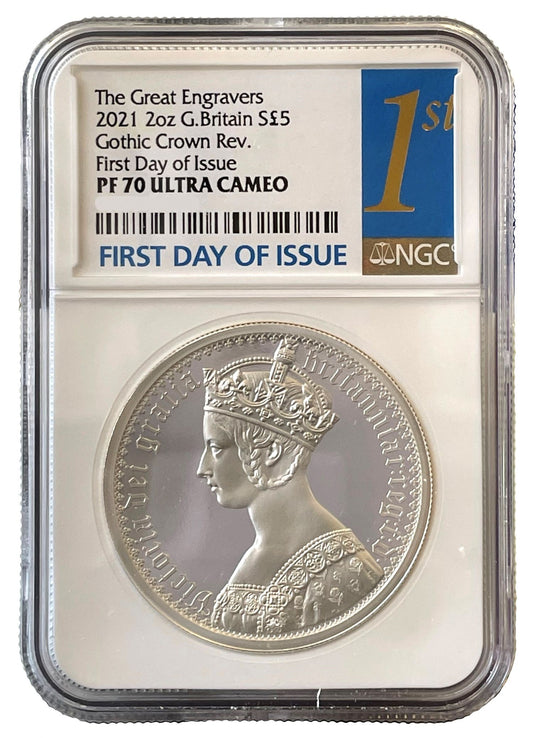FAQs
What makes a coin valuable?
I have coins to sell, what’s the next step?
How will my purchases be shipped?
What happens if I’m not entirely happy with my purchase?
James Conder's Ipswich Penny 1796
18th Century Token, Suffolk, Ipswich, copper Penny, 1796, issued by James Conder, bust of Cardinal Wolsey left, M below for engraver John Milton, legend and toothed border surrounding, CARDINAL WOLSEY BORN AT IPSWICH 1471, rev. inverted die axis, six line inscription with date below, PAYABLE / AT/ CONDER'S / DRAPERY / WAREHOUSE / IPSWICH / 1796, edge with incuse inscription, I PROMISE TO PAY ON DEMAND THE BEARER ONE PENNY X, weight 18.58g (D&H 11 R). With plenty of original lustre, light overtone, die flaw as usual across reverse, otherwise good extremely fine and rare.
Provenance:
This coin illustrated in "Coinage and Currency in Eighteenth Century Britain, The Provincial Coinage" by David W Dykes, page 344, number 388, with old A H Baldwin ticket in hand of Timothy Millett.
James Conder (1763-1823), author of the last token catalogue of the 18th Century and a standard work of reference throughout the 19th Century, published at Ipswich in 1798 as Conder's "Arrangement of Provincial Coins, Tokens and Medalets" and still his name is remembered today as the nom de plume for the series in the United States of America.
James Conder was born in Mile End London and for many years was a linen draper and Haberdasher in Ipswich and issued tokens to advertise his business. He was also keen to issue unusual collectible mules of different combinations of dies of his own tokens and built up a sizeable collection himself which was eventually auctioned by Sotheby in 1855.
Cardinal Thomas Wolsey (1473-1530) in a long career for Tudor times, became the closest advisor to King Henry VIII. Appointed Cardinal, Archbishop of York, Primate of England from 15th September 1514, as well as Bishop of Lincoln earlier the same year, his secular power again increased in 1523 when appointed Bishop of Durham. Wolsey became the Lord Chancellor from 1515 when the Archbishop of Canterbury William Warham resigned, now practically the most powerful man in England after the King he exercised his right to coinage as Archbishop of York as his predecessors had, his initials and cardinal hat appearing on the reverse on his Groats from 1526. The rare variety here being the rarest of all as it omits his initials. Wolsey's fall from the King's grace occurred from 1529 with the tardiness of his annulment of the King's marriage to Catherin of Aragon, which displeased Anne Boleyn. The King's confidence in Wolsey lost, he stripped him of his government office and property including Hampton Court, leaving him only with secular titles and as Archbishop of York where the Cardinal set out for soon after for the first time in his bishopric. However, when he reached Cawood in Yorkshire he was accused of Treason by Henry Percy 6th Earl of Northumberland, and ordered to return to London. He fell ill on the journey and died at Leicester on 29th November 1530 at the age of 57, he was buried in Leicester Abbey without a monument. Interestingly Wolsey had had a black sarcophagus made by Benedetto da Rovezzano and Giovanni da Maiano for eventual internment at Windsor, and King Henry VIII even contemplated using it for himself. However, it was eventually used for the resting place of Lord Nelson some 250 years later in the vault of St Pauls Cathedral.
FAQs
What makes a coin valuable?
I have coins to sell, what’s the next step?
How will my purchases be shipped?
What happens if I’m not entirely happy with my purchase?













